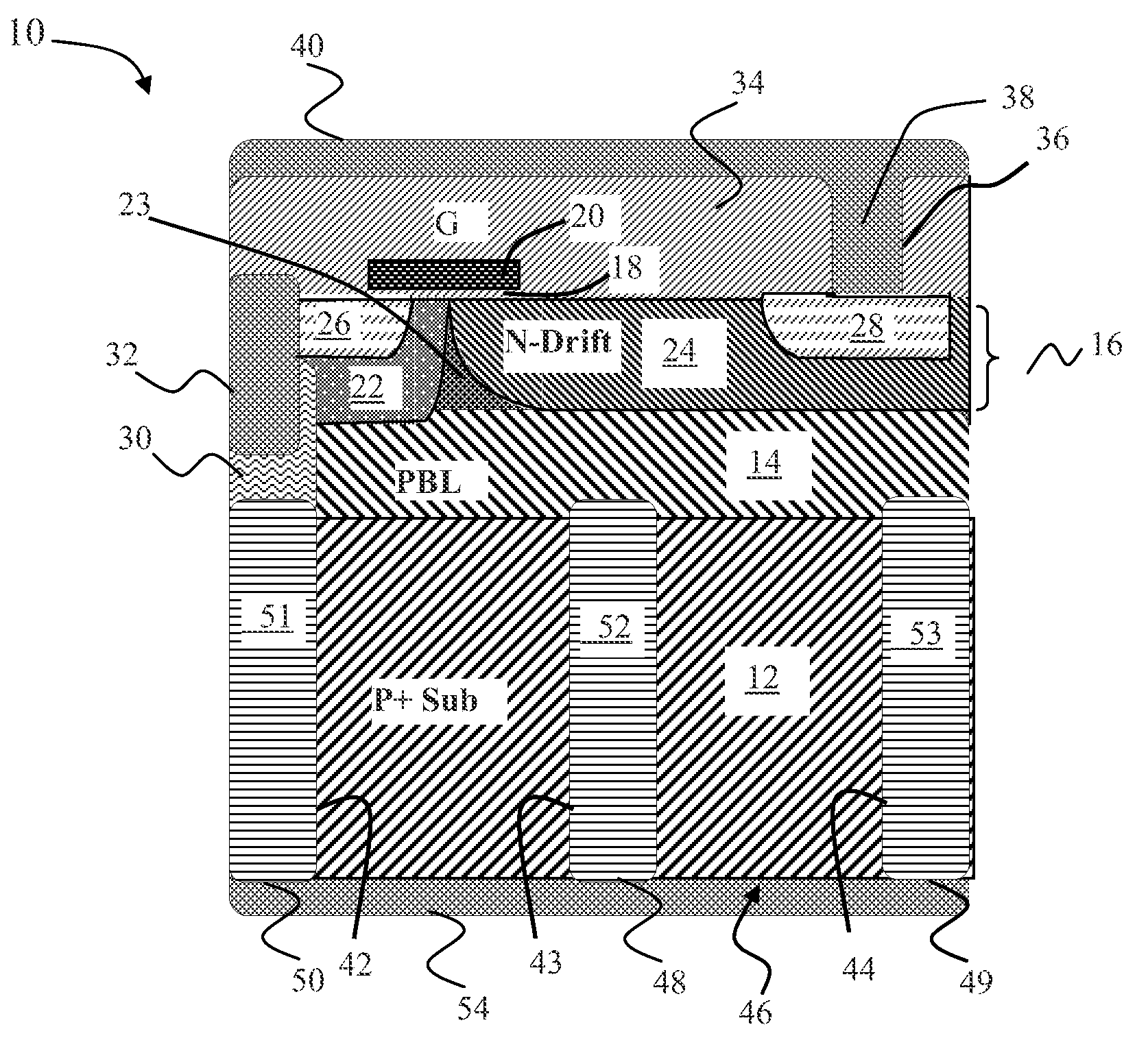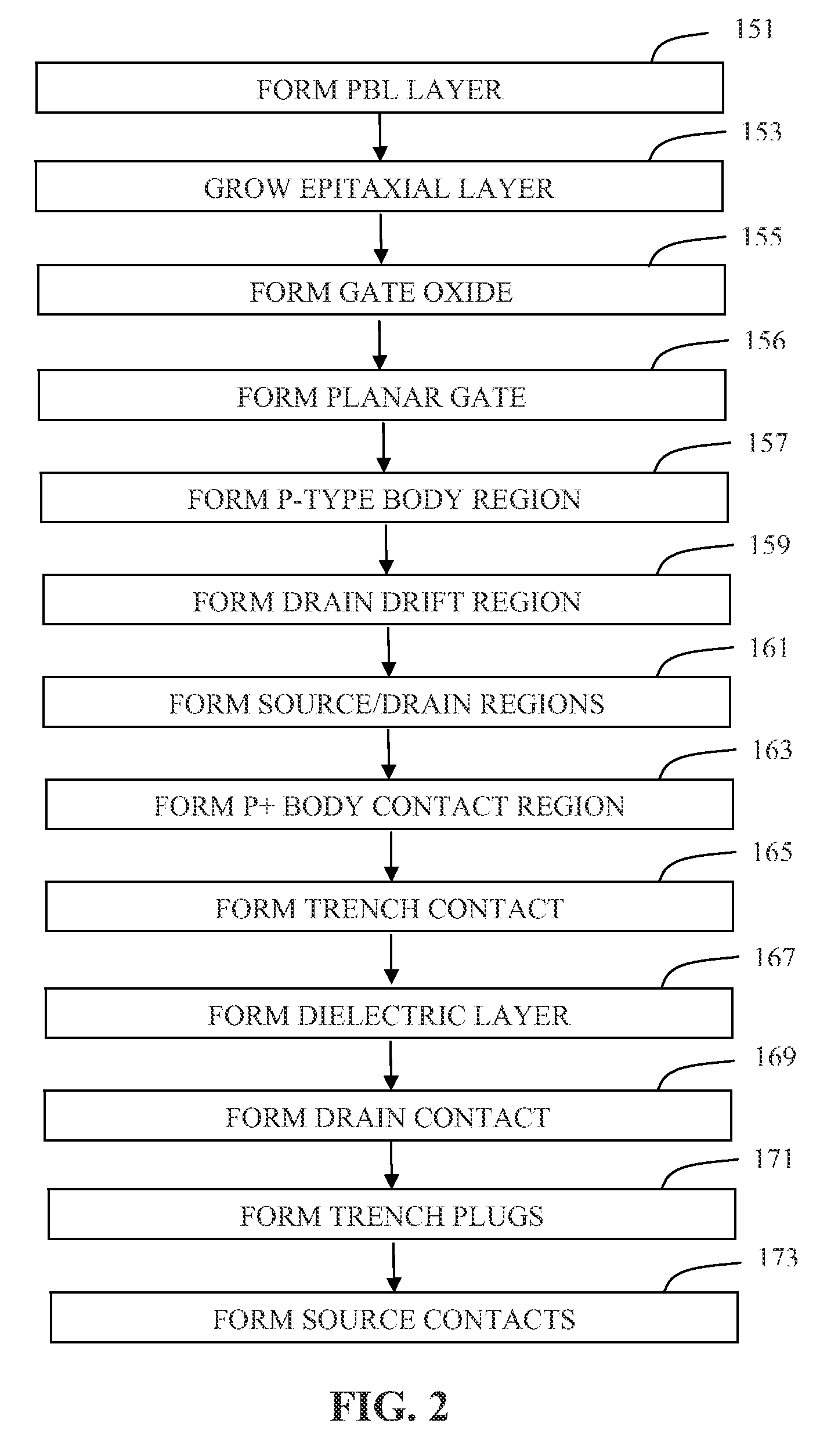Through silicon via processing techniques for lateral double-diffused mosfets
- Summary
- Abstract
- Description
- Claims
- Application Information
AI Technical Summary
Benefits of technology
Problems solved by technology
Method used
Image
Examples
Embodiment Construction
[0020]Referring to both FIGS. 1 and 2, LDMOS 10 is formed on a P-type substrate 12 with an epitaxial layer 16 is formed thereon, A P-type buried layer (PBL) 14 is formed at the junction of the P-type stibstrate 12 and the epitaxial layer 16 as indicated at step 151, The epitaxial layer 16 is grown on top of the PBL layer as indicated at step 153. The epitaxial layer may be N-type or P-type. The active regions of transistor 10 are formed in the epitaxial layer 16. PBL 14 may be formed by standard buried layer implantation processes, or alternatively, may be formed using a step epitaxial process. That is, a heavily doped P-type epitaxial layer may be grown on top of substrate 12 to serve as PBL 14. Alternatively, the PBL 14 may be formed by deep implantation. Epitaxial layer 16 may be grown on top of the PBL 14. A thickness of PBL layer 14 may be about couple of microns thick when a thickness of epitaxial layer 16 is in a range of few microns to 10 microns. Specifically, epitaxial lay...
PUM
 Login to View More
Login to View More Abstract
Description
Claims
Application Information
 Login to View More
Login to View More - Generate Ideas
- Intellectual Property
- Life Sciences
- Materials
- Tech Scout
- Unparalleled Data Quality
- Higher Quality Content
- 60% Fewer Hallucinations
Browse by: Latest US Patents, China's latest patents, Technical Efficacy Thesaurus, Application Domain, Technology Topic, Popular Technical Reports.
© 2025 PatSnap. All rights reserved.Legal|Privacy policy|Modern Slavery Act Transparency Statement|Sitemap|About US| Contact US: help@patsnap.com



